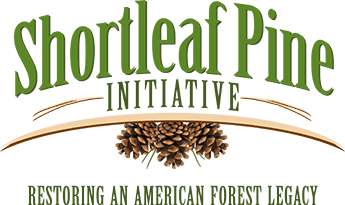|
Shortleaf research, newspaper articles, fact sheets, conference proceedings, literature reviews, and brochures.
Shortleaf Loblolly Pine Revisiting the relationship between common weather variables and loblolly–shortleaf pine seed crops in natural stands
Revisiting the relationship between common weather variables and loblolly–shortleaf pine seed crops in natural stands
Cain, M. D., & Shelton, M. G. (2000). Revisiting the relationship between common weather variables and loblolly–shortleaf pine seed crops in natural stands. New Forests, 19(2), 187-204. Retrieved from https://link.springer.com/content/pdf/10.1023%2FA%3A1006624907975.pdf Harrington, C. A., Brissette, J. C., & Carlson, W. C. (1989). Root system structure in planted and seeded loblolly and shortleaf pine. Forest science, 35(2), 469-480. Retrieved from http://www.ingentaconnect.com/content/saf/fs/1989/00000035/00000002/art00016 Little, S., & Somes, H. A. (1964). Root systems of direct-seeded and variously planted loblolly, shortleaf, and pitch pines. Northeastern Research Station, Research Paper NE-26. Retrieved from http://www.treesearch.fs.fed.us/pubs/3843  Shortleaf pine composition and structure in the United States
Shortleaf pine composition and structure in the United States
Moser, W. K., Hansen, M., McWilliams, W. H., & Sheffield, R. M. (2007). Shortleaf pine composition and structure in the United States. Paper presented at the Shortleaf Pine Restoration and Ecology in the Ozarks: Proceedings of a Symposium. USDA Forest Service, GTR-NRS-P-15, Northern Research Station, Newtown Square, PA. Retrieved from https://www.nrs.fs.fed.us/pubs/gtr/gtr_p-15%20papers/3moser-p-15.pdf  Shortleaf pine hybrids: growth and tip moth damage in southeast Mississippi
Shortleaf pine hybrids: growth and tip moth damage in southeast Mississippi
Lott, L. H., Highsmith, M. T., & Nelson, C. D. (2007). Shortleaf pine hybrids: growth and tip moth damage in southeast Mississippi. Northern Research Station, General Technical Report NRS-P-15. Retrieved from https://www.nrs.fs.fed.us/pubs/gtr/gtr_nrs-p-15.pdf#page=109  Site preparation methods for establishing or re-establishing pine stands
Site preparation methods for establishing or re-establishing pine stands
Barry, J. E., Cunningham, K., & Walkingstick, T. (2008). Site preparation methods for establishing or re-establishing pine stands. University of Arkansas Research and Extension. Retrieved from https://www.uaex.edu/publications/PDF/FSA-5002.pdf Harrington, C. A. (1987). Site-index comparisons for naturally seeded loblolly pine and shortleaf pine. Southern Journal of Applied Forestry, 11(2), 86-91. Retrieved from http://www.ingentaconnect.com/content/saf/sjaf/1987/00000011/00000002/art00007 Campbell, T. E. (1985). Sprouting of slash, loblolly, and shortleaf pines following a simulated precommercial thinning. Southern Research Station, Research Note SO-320. Retrieved from https://www.fs.usda.gov/treesearch/pubs/1735 Cain, M. (1991). The influence of woody and herbaceous competition on early growth of naturally regenerated loblolly and shortleaf pines. Southern Journal of Applied Forestry, 15(4), 179-185. Retrieved from http://www.ingentaconnect.com/content/saf/sjaf/1991/00000015/00000004/art00004 Shelton, M. G., & Cain, M. D. (2002b). The sprouting potential of loblolly and shortleaf pines: Implications for seedling recovery from top damage. Proceedings of the 2002 Arkansas Forest Resources Center Arkansas Forestry Symposium, Little Rock, AR, May 23, 2002. Retrieved from http://www.treesearch.fs.fed.us/pubs/9549 |

